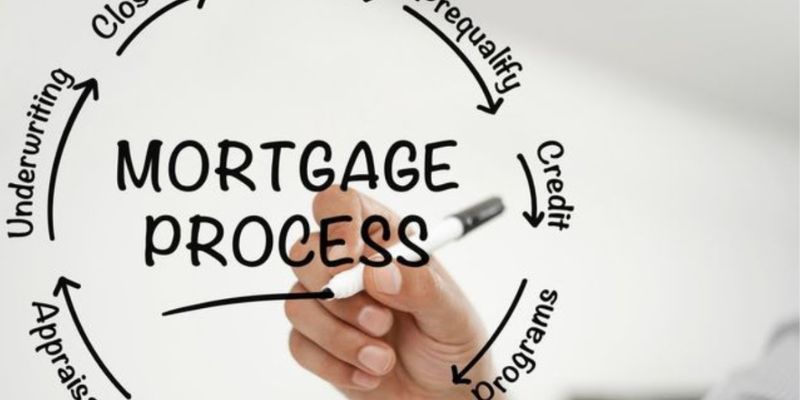How the Purchase and Refinance Mortgage Process Works
Jul 01, 2023 By Susan Kelly
Are you looking to enter the real estate market as a first-time homeowner or a seasoned investor? Regardless of your experience level, understanding the purchase and refinance mortgage process can help you make an informed decision.
In this post, we'll look at each step of the process and explain what it takes to secure financing for your dream property. From deciding if buying or refinancing is right for you to closing on your new home - this guide has you covered!
Read on to learn more about navigating these mortgage processes with confidence.
How to Begin the Mortgage Process: Find a Mortgage Lender

The first step in the mortgage process is finding a lender. It would help if you shopped around to compare rates and terms from multiple lenders, as well as get an understanding of the different types of mortgages available. A good lender will walk you through your options and provide personalized advice based on your unique needs and financial situation.
Differences Between Purchasing and Refinancing a Home
It is important to understand their differences before diving into the purchase and refinance mortgage process details.
Purchase Loans
Home purchasing is typically the largest financial investment most individuals will make in their lifetime. You must go through the mortgage process to secure funding for this purchase. A purchase loan is a loan to buy a house or other real estate property.
The loan can come from a private lender or a government-sponsored entity such as Fannie Mae or Freddie Mac. The process involves loan pre-qualification and approval and submitting financial documents such as your credit score, income, and other information. Once approved, you must close on the home by signing all relevant documents and paying closing costs. You can easily navigate the purchase mortgage process with proper preparation and research.
Refinancing
Refinancing a home is when you take out a new loan to pay off the remaining balance of an existing loan. It can be beneficial if you seek better terms, such as lower interest rates or easier repayment options.
The process involves researching and comparing different lenders to find the best option for your needs. Additionally, you must submit financial documents similar to those for a purchase loan. After you have been approved, the closing process is similar to a purchase loan - signing documents and paying closing costs.
Refinancing can be an attractive way to pay off your existing debt without taking on a new one. With careful planning and research, refinancing can be a great way to save money in the long run.
Owning vs. Purchasing a Home
When deciding between buying and refinancing a home, it's essential to consider both your choice's short-term and long-term effects. Owning a home can yield many long-term benefits, such as building equity over time, increasing your net worth, and enjoying tax deductions. Homeownership also provides stability, allowing you to stay in the same place for as long as you want.
On the other hand, purchasing a home can be costly upfront, but it also allows you more control over your investment. You can choose your upgrades and improvements to increase your property's value. Purchasing is beneficial if you plan on staying in the area for a while and want to build wealth through your investment.
Refinancing Can Be Quicker
Refinancing your home loan can be significantly faster than purchasing one. The process requires fewer steps, making it ideal for those who need a quick turnaround time. Additionally, most lenders offer streamlined refinancing processes that are simpler and require less paperwork.
When Is an Appraisal Necessary
The appraiser works with the lender to determine a fair market value for the property. Appraisals are necessary when applying for a purchase loan or refinancing an existing mortgage.
Appraisals can be costly, so deciding if one is necessary before you begin your loan process is important. A professional appraisal report provides accurate information on the condition and value of a property. It can also determine the loan-to-value ratio, which is important when deciding if you are eligible for a loan or refinance.
Steps in the Mortgage Process

Application
The first step of the purchase or refinance mortgage process is to apply for a loan. You'll have to provide details about your income, employment history, and credit score as part of the application process.
During this phase, you'll also need to decide which type of loan best suits your needs - a fixed-rate or adjustable-rate mortgage, FHA loan, or VA loan.
Processing
Once the application is submitted, it'll be reviewed by a loan processor. They will verify the information on your application and check your credit report. The lender may also order an appraisal of the property to ensure it's valued at or above the amount you're looking to borrow.
Underwriting
The underwriter then reviews all of the documents related to the loan. They'll determine if you meet the lender's criteria and whether the property is a good investment for them. This process step can take several weeks, depending on how quickly all necessary paperwork is completed.
Conditional Approval
You will be given a conditional approval if your loan application is accepted. The lender has accepted your application, but there are still some requirements that must be satisfied before your loan may be approved. These conditions can entail supplying further information or demonstrating the availability of money to cover closing costs.
Final Underwriting
Once the conditions are met, your loan will go through a final underwriting process. The lender will review all the documents and ensure you meet their qualifications. Once this is done, they'll issue final approval for your mortgage.
Closing
The last step is to close the loan. This step involves signing all necessary paperwork, paying closing costs, and providing funds for the down payment (if required). Once this is done, you'll get the keys to your new home!
FAQs
What are the stages of refinancing a mortgage?
The refinancing process involves several steps, depending on your loan type. Generally speaking, these are the stages:
- Check your credit score and home equity to determine if you qualify for a refinance.
- Calculate estimated closing costs and decide how much cash you need to close.
- Shop around to find the best deal on a new loan.
- Apply for the refinance and wait to hear back from lenders.
- Review documents, sign them, and make necessary down payments or closing costs.
- Wait for the final approval of your refinance from the lender.
- Celebrate as you enjoy lower monthly mortgage payments.
How soon after purchase can you refinance?
It would help if you waited at least six months before you could refinance after purchase. This wait is because lenders want to ensure your home has increased in value, and you're taking out only what its current market worth is.
Does refinancing hurt your credit?
Yes, refinancing can temporarily lower your credit score. This temporary lowering is because lenders will conduct a hard inquiry on your credit when you apply for a refinance to determine if you qualify. Hard inquiries can stay on your credit report for up to two years and may cause a dip in your credit score.
Conclusion
The decision to purchase or refinance a home can be intimidating. However, understanding the process of how mortgages work is the best place to start. By learning about the different steps involved in purchasing and refinancing a mortgage, you can decide which path is right for you and begin your journey toward homeownership. Finding the right lender is key to guiding you through the mortgage process and ensuring your questions are answered immediately.








